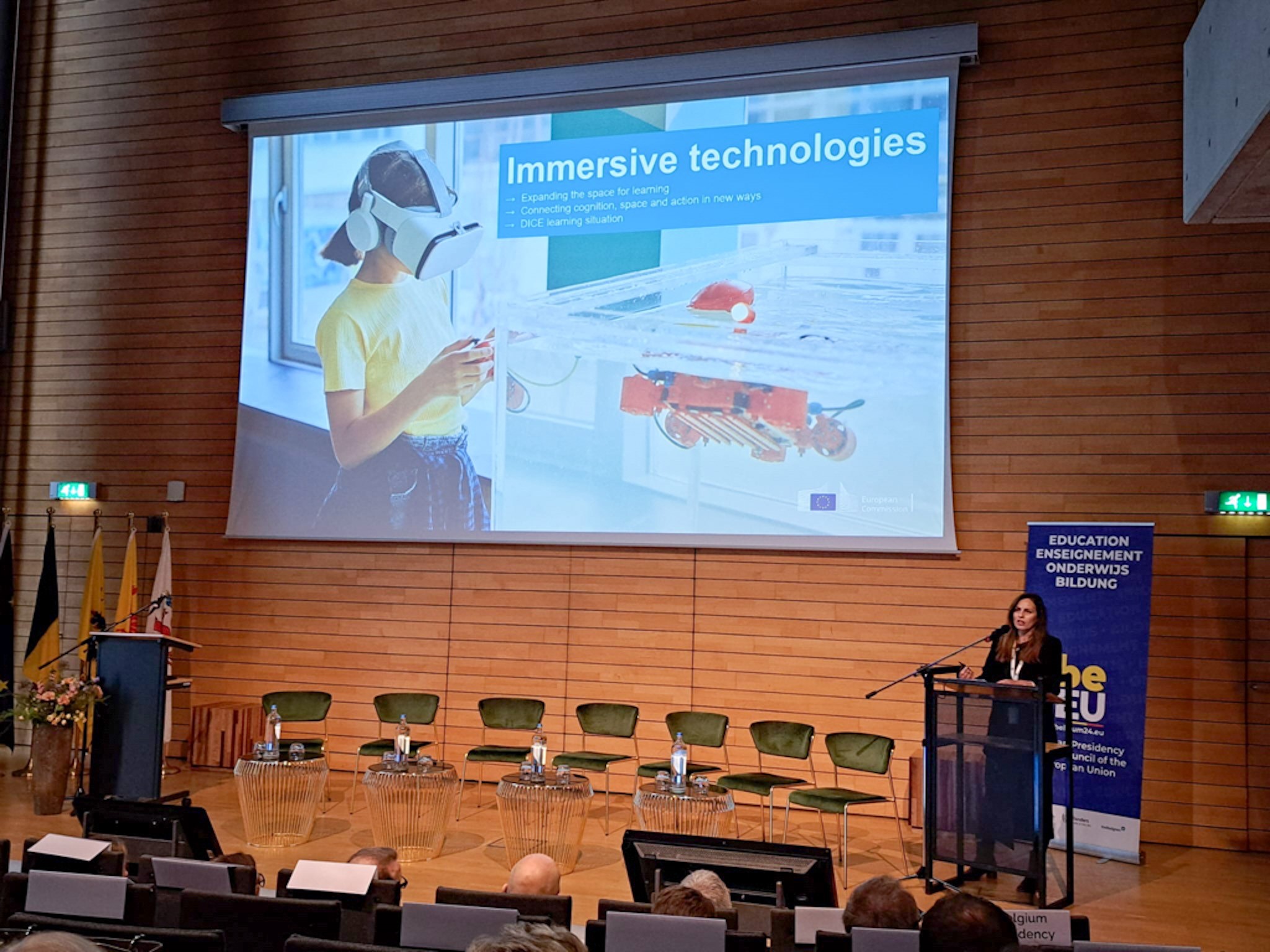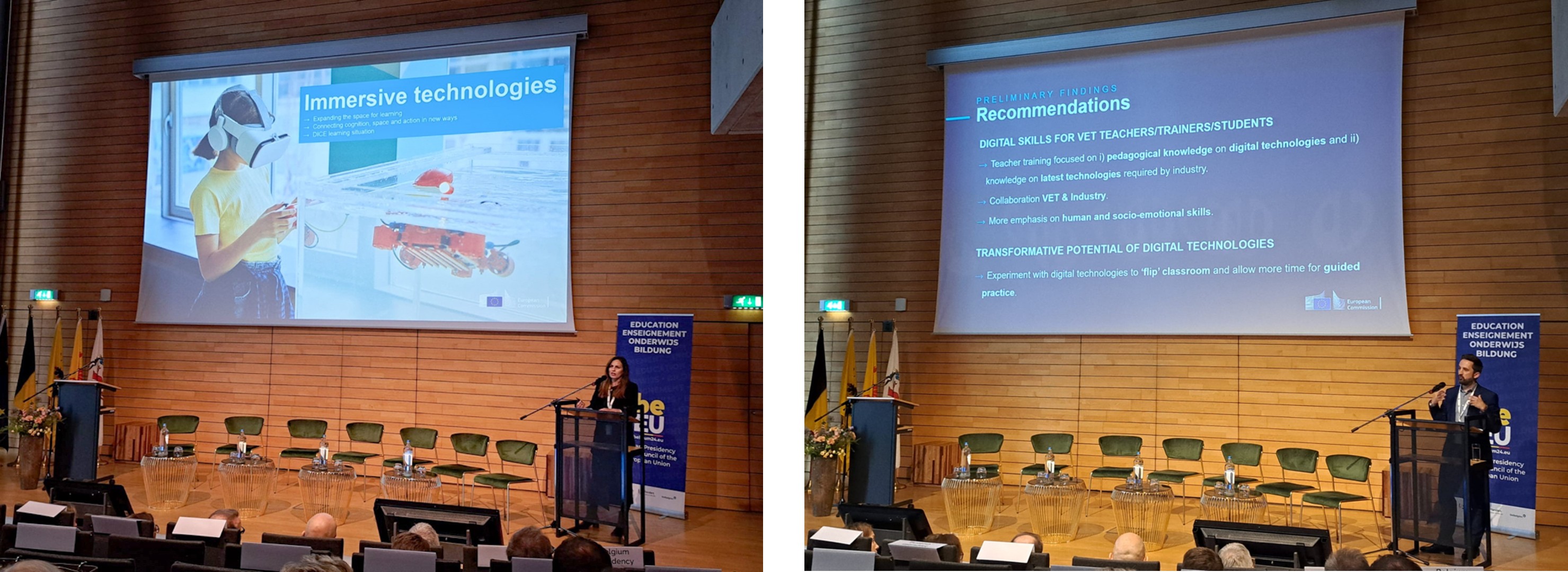How is the digital transformation shaping the Vocational Education and Training (VET) sector?

date: 13/03/2024
Vocational Educational and Training is the sector of education and training systems closest to the labour market. Its mission is to provide learners with skills and knowledge that are directly applicable to specific occupations and professions.
At the JRC, we are working to support the digital transformation of the VET from different angles via research. The main goal is to support having a better prepared future workforce who can better grasp the job opportunities that the digital transformation brings and, these workers with the necessary digital competences could be a transformation vector in the SME, which is also a clear need nowadays.
On 18 March, we presented our current research on Digital Transformation of the VET sector at the meeting of the Directors General in Vocational Education and Training (DGVT), organised by the Belgian Presidency in collaboration with the European Commission's Directorate General for Employment, Social Affairs & Inclusion.

This area of research, led by the Digital Education and Skills team (Unit T.1), currently revolves around three domains:
Digitalisation of the VET sector
The VET sector, as a natural bridge between the education and the world of work, it is very well-placed to equip the future workforce with the necessary skills and competences, including the digital ones.
VET is very high in the European agenda, but also regionally and nationally, with different efforts, policies and initiatives to ensure people, future workers, have the right skills for the jobs of today and tomorrow.
In this domain, we have four different lines of research:
-
Enablers for a succesful digital transformaiton of VET;
-
emerging trends and technolgies in VET from practitioenrs perspective;
-
VET systems case studies (strong collaboration with companies and focus on digitalisation);
-
full development of the self-reflection tool SELFIE WBL.
New emerging trends and technologies in education and training
Emerging trends in education and training
In September 2023, we have published a JRC Science for Policy report that highlights the latest technology and trends in education and training with the objective of helping determine where policy intervention is necessary.
It aims to go beyond the state-of-the-art, offering recommendations to ensure that future policy actions are aligned with the societal and educational needs.
Next generation virtual worlds
We are also contributing to the JRC work on next generation virtual worlds. On November 2023, we moderated a dedicated parallel session on education during the ‘Shaping the Next Generation Virtual Worlds – Science for Policy event’, including the implications of immersive technologies in the VET sector. Find the main discussion points on the event report.
Towards the end of this year, another workshop is planned specifically to understand the implications of next generation virtual worlds on education and training.
Skills mismatches
Digital skills analysis in the workforce
The JRC Science for Policy brief ‘What drives workers’ participation in digital skills training?‘, in collaboration with Cedefop, analyses data proceeding from the European skills and jobs survey (ESJS2) to reveal the characteristics of workers who feel they lack digital skills, as well as the factors that affect EU workers' participation in digital skills training.
These findings coincide with the publication of the European Commission action plan on Labour and skills shortages in the EU, within the context of the European Year of Skills (May 2023 - May 2024).
